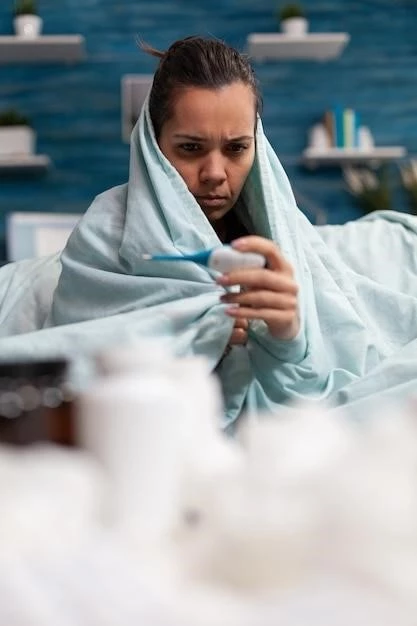Introduction to Moyamoya Disease
Moyamoya disease is a rare cerebrovascular condition characterized by progressive stenosis of arteries at the base of the brain. This results in a compensatory network of collaterals. Symptoms often include strokes and seizures. Learn more about the causes, symptoms, and management of Moyamoya disease.
Definition of Moyamoya Disease
Moyamoya disease is a rare cerebrovascular condition characterized by progressive stenosis of arteries at the base of the brain, resulting in a compensatory network of collaterals known as ″moyamoya vessels.″ These vessels appear like a ″puff of smoke″ on imaging studies. Moyamoya disease can lead to strokes, seizures, and cognitive impairment due to reduced blood flow to the brain.
The exact cause of Moyamoya disease is still unknown, but there is ongoing research into genetic factors, autoimmune processes, and environmental influences that may contribute to its development. It primarily affects children and adults, with the typical presentation being recurrent strokes or transient ischemic attacks (TIAs). Early diagnosis and management are crucial in preventing complications and improving outcomes for individuals with Moyamoya disease.

Symptoms and Diagnosis
Early identification of moyamoya disease symptoms such as strokes, headaches, and seizures is crucial for timely diagnosis. Diagnostic tests like magnetic resonance imaging (MRI) and cerebral angiography play a key role in confirming the condition. Individuals experiencing these symptoms should seek immediate medical attention for proper evaluation and management.
Signs and Symptoms of Moyamoya Disease
Moyamoya disease often presents with signs such as strokes, headaches, and seizures. Children and adults may experience recurring transient ischemic attacks (TIAs) or mini-strokes, with adults also at risk of brain bleeding due to pressure on the delicate moyamoya vessels. Early recognition of these symptoms is crucial for prompt medical evaluation and intervention.
Diagnosis of Moyamoya Disease
Diagnosing Moyamoya disease involves various imaging tests such as magnetic resonance imaging (MRI), magnetic resonance angiography (MRA), and cerebral angiography. These tests help visualize the narrowing of arteries and the formation of collateral blood vessels characteristic of Moyamoya disease. A comprehensive evaluation by a neurologist or neurosurgeon is essential for accurate diagnosis and appropriate treatment planning.
Causes and Risk Factors
While the exact cause of Moyamoya disease remains unknown, genetic factors, autoimmune processes, and environmental triggers are currently under investigation. Individuals of East Asian descent, especially from Japan, are more commonly affected by this condition. Early detection and intervention are essential in managing Moyamoya disease and reducing the risk of complications.
Possible Causes of Moyamoya Disease
The exact cause of Moyamoya disease is not yet fully understood, with research focusing on genetic factors, autoimmune processes, and environmental influences that may contribute to its development. Studies have identified the RNF213 gene as a significant susceptibility factor for Moyamoya disease in individuals of East Asian descent. Further research is ongoing to elucidate the intricate mechanisms behind this complex cerebrovascular condition.
Risk Factors for Moyamoya Disease
Individuals of East Asian descent, particularly from Japan, are at higher risk for Moyamoya disease. Genetic factors, autoimmune processes, and environmental influences may also contribute to the development of this rare cerebrovascular condition. Early detection and proactive management are essential to mitigate the risk factors associated with Moyamoya disease and improve outcomes for affected individuals.
Treatment Options
When managing Moyamoya disease, treatment strategies may include medical management to address symptoms and surgical interventions to improve blood flow to the brain. It’s crucial for individuals with Moyamoya disease to work closely with a healthcare team to determine the most suitable treatment plan based on their specific condition and needs. Explore the available options with your healthcare provider to ensure the best possible outcomes.
Medical Management of Moyamoya Disease
Medical management of Moyamoya disease focuses on controlling symptoms such as strokes, headaches, and seizures. Medications to prevent blood clots and manage blood pressure may be prescribed. Regular monitoring and follow-ups with healthcare providers are essential to assess the response to treatment and adjust the management plan accordingly. Moreover, leading a healthy lifestyle with a balanced diet, regular exercise, and adequate rest can contribute to overall well-being while living with Moyamoya disease.
Surgical Interventions for Moyamoya Disease
In certain cases of Moyamoya disease, surgical interventions may be recommended to improve blood flow to the brain and reduce the risk of complications such as strokes. Procedures like direct or indirect revascularization aim to create new pathways for blood flow, bypassing the blocked arteries. It’s important for individuals with Moyamoya disease to discuss these surgical options with their healthcare providers to determine the most suitable treatment approach based on their specific condition and medical history.

Complications and Prognosis
Understanding the potential complications of Moyamoya disease, such as strokes, seizures, and brain bleeding, is crucial for individuals managing this condition; Prognosis varies depending on the severity of arterial blockage and the effectiveness of treatment. Close monitoring and adherence to treatment plans can significantly impact the long-term outlook for individuals with Moyamoya disease.
Potential Complications of Moyamoya Disease
Complications related to Moyamoya disease may include strokes, seizures, and brain bleeding. The condition can lead to cognitive impairment and physical disabilities if left untreated. Early detection, proper management, and adherence to treatment plans are essential in reducing the risk of these complications and improving the overall prognosis for individuals with Moyamoya disease. Regular follow-ups with healthcare providers are crucial for monitoring and addressing any potential issues that may arise.
Prognosis for Individuals with Moyamoya Disease
The prognosis for individuals with Moyamoya disease can vary depending on the severity of the condition, the effectiveness of treatment, and the presence of complications like strokes and brain bleeding. Early diagnosis and appropriate management play a crucial role in improving outcomes. Continued monitoring and adherence to treatment plans can help individuals with Moyamoya disease maintain a better quality of life and reduce the risk of adverse events associated with the condition.
Support and Resources
Living with Moyamoya disease can be challenging, but there are supportive care options available to help individuals cope with the condition. Additionally, various resources and assistance programs exist to provide guidance and support to those affected by Moyamoya disease. Explore these support networks and resources to access the assistance you need in managing this rare cerebrovascular condition.
Supportive Care for Moyamoya Disease Patients
Supportive care for Moyamoya disease patients involves a multidisciplinary approach to managing symptoms and improving quality of life. This may include physical therapy, speech therapy, and cognitive rehabilitation to address functional deficits. Psychological support and counseling can also aid patients and their families in coping with the emotional impact of the disease. Connecting with support groups and online communities can provide valuable peer support and information-sharing opportunities for individuals navigating Moyamoya disease.
Resources and Assistance Programs for Moyamoya Disease
Various resources and assistance programs are available to support individuals affected by Moyamoya disease. These programs offer guidance, information, and emotional support to patients and their families as they navigate the challenges associated with this rare cerebrovascular condition. Additionally, these resources can provide valuable insights into treatment options, research advancements, and community support networks tailored to the needs of individuals living with Moyamoya disease.
